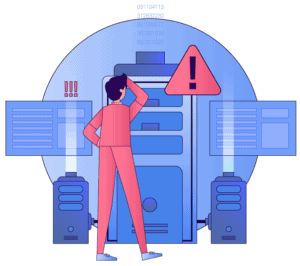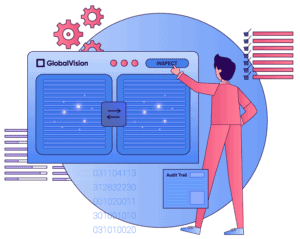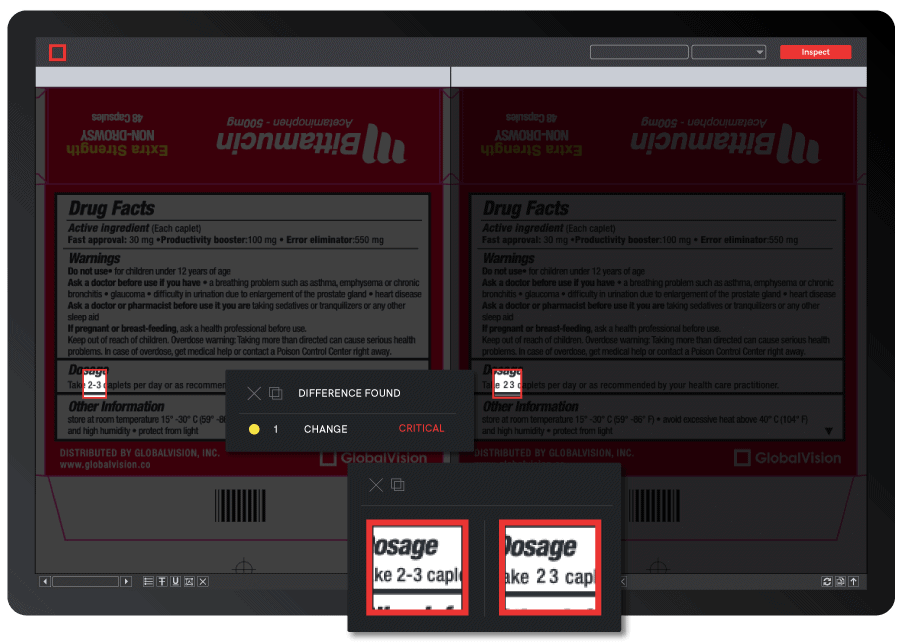Date: January 17, 2022 | Category: Proofreading | Author: Hana Trokic
Top 5 Business Proofreading Practices
You’ve spent hours writing your copy, you got every word, sentence, and paragraph to flow perfectly in sync, and you are finally ready to publish your content. Are you confident you checked every last detail to the T? Sure, you got some heavy lifting out of the way but document creation and copywriting are just the beginning.
Even after the words have been written, the tedious task of proofreading lies ahead. If effective proofreading techniques are not properly implemented, this can often take hours or days, and even then, the potential for error is high.
Thankfully, the solution is simple. Effective business proofreading techniques are easy to apply and are highly efficient when appropriately implemented. Not only will they make the task of proofreading easier, but they will also substantially reduce the probability of error in your content.
Want to learn how to take your business proofreading techniques to the next level and ease your editing woes?
Here are five top tips for proofreading your business writing.
1. Four Eyes See More Than Two

Your eyes can deceive you, especially when you have been staring at the same piece of copy for hours on end. A quick fix is to get more eyes on your copy. Set up a proofreading system or a small team that will look over all written copies, meticulously looking for errors.
Once you have looked over your written document and are confident you have found all the mistakes your eyes can see, know who to send it to get a fresh pair of eyes to review your work. If possible, have two or three different people proofread your writing before you can confidently say, “This work is flawless!”
2. Let it Marinate
Some things get better with time, and proofreading is one of them. It’s hard to notice mistakes when proofreading the same document for long periods of time. At a certain point, it all just looks like letters, lines, and symbols on a white page.

The solution? Let it sit for a while.
In other words, defamiliarize yourself with your copy to get to know it better. Though it may seem counterintuitive, it will enable you to come back with a new perspective on your writing. Like all marinating periods, overnight would be ideal, but even if you are on a tight schedule and only have 15, 20, 30 minutes to an hour, anything is better than nothing.
Sometimes, all you need is time and distance to make you come back with a clearer mindset and new perspective. The same goes for effective proofreading. When you come back to your work, you will see your writing in a new light and will be able to make adequate changes to make your content shine.
3. Pace it Out
Whether it be a brochure, a blog post, or a single page of written work, proofreading can be intimidating. Make things easier on yourself by breaking your proofreading up into sections and stages.

Treat each paragraph or written section as an individual entity and solely focus on each section until you are sure there are no errors. Breaking up a more significant task into smaller, more easily achievable goals will ultimately allow you to ease up, relax, and concentrate fully on editing your business writing without any added pressure or stress. The outcome is less room for error and a more thoroughly proofread piece of content.
An added tip is to review the written copy in stages. For example, run through your copy once solely focusing on word flow and messaging. Next, look for run-on sentences and repetitive words. Finally, check for minor errors such as spelling mistakes and misused punctuation. Pacing out your proofreading techniques will eliminate the risk of losing focus and ultimately make for a cleaner, clearer final product.
4. Back it Up
This proofreading technique is straightforward. Edit backwards.
The reverse psychology of the editing world, this proofreading technique has you starting from the bottom, the end, the very last sentence of your written piece of work. When editing your work, you can easily slip from “editing mode” to “reader mode” and stop noticing minor errors in your writing. Throughout the writing and editing process, you become so familiar with your copy that it becomes harder to snap out of “reader mode” and give your work a more critical review.
Backwards editing has you editing from the final sentence and moving backwards until you reach your top and final (or first) sentence. This technique allows you to view sentences individually without thinking about storytelling or wordflow. No context or substance is needed. All you have to do is focus on the pure joys of proofreading!
5. Modern Times, Modern Solutions 
We live in a time where technology has simplified our everyday lives and tasks. Why not take advantage of it? We have thought of endless innovations, applications, and software that make things easier and more efficient. Thankfully, proofreading got the memo.
Cue automated quality control. Software that makes proofreading processes more efficient and eliminates the need for fully manual editing. Through automated inspections, you can now speed up editing processes while simultaneously improving accuracy and efficiency in the workplace.
GlobalVision’s digital checks and automated quality control tools are the perfect solution for any modern-day business that will ultimately help your team save hours on proofreading tasks and increase productivity across copywriting, writing, and editing processes.
Replace the need for manual proofreading and enter the modern age while simplifying business practices. Need we say more?
The Proof is in the Proofreading
There are many different effective proofreading techniques for businesses that can easily be implemented to help enhance everyday tasks and activities. However, to keep up with trends and demands, switching to new, contemporary methods is sure to bring endless benefits to your business while increasing productivity and efficiency. Automated quality control is a small step that will result in enormous advantages for your business at large.
Enhance your proofreading practices and make the switch today. See how automated quality control can advance your business and ensure your company’s continued growth and modernization. With automated quality control, never again will you have to think, what are effective proofreading techniques? We do the work for you.
To learn more about the benefits of switching to automated quality control, request a demo of GlobalVision here.
Related Articles:
Ensure your content is always error-free in record time with GlobalVision. Try it now for free.
Keep up with the latest updates in automated proofreading software. Sign up for our newsletter.

Risks of Manual Verification as a Proofreading Method
Date: January, 2022 | Category: Proofreading | Author: Hana Trokic
Before a product reaches the hands of consumers, there are thousands of behind-the-scenes steps, procedures, and inspections that have to be completed to ensure that the final product is perfect.
All aspects of the product must be free from error, including the packaging, labeling, and copy. Not a single word, letter, punctuation, or line should be out of place. On the contrary, companies might find themselves in critical situations either legally, financially, or socially and risk losing their brand reputation.
Setting up proper workflows where proofreading takes priority is crucial in product development to avert crises, allowing companies to deal with product management instead of crisis management. Yet, the importance of error-free packaging and print may be one of the most overlooked yet essential factors in the product life cycle as many still rely on manual verification.
This is why effective proofreading methods must be placed to ensure the quality and accuracy of each product that is sent out to consumers.
The Risks of Manual Verification
They say with great risk comes great reward, but some things should not be tampered with. Proofreading is one of them and should remain a complete and utter safe zone. Processes that enable its impeccable implementation should be undergone to ensure every product that makes it to market is error-free.
Yet, how is a product proofread? Manual proofreading was once a norm that implies human verification before it goes out to print. We’ve all been there; we know how brain-draining the proofreading process can be. At a certain point, words just look like words, and we lose the ability to make sense of it, leading to hasty, minor errors with potentially significant consequences.
A solution might be to employ larger labour forces to verify content manually. However, this is a more costly solution, and the revision process would also take up far too much time. This would halt efficient workflow processes and increase overall production time, a considerable setback in today’s face-paced, consumer-driven environment.
To stay competitive in today’s market, companies simply cannot afford the setbacks of manual verification.
What’s more, manual verification is not highly accurate when dealing with graphics, colour deviations, barcodes, or braille. Unless the mistakes are evident, the human eye cannot detect minor discrepancies that otherwise compromise the integrity of the overall design, packaging, label, and so on.
Automated proofreading software completes this task with utter ease and does so in a matter of seconds to minutes. Comparing the master document with the print, not only will it scan for all errors in text, colours, graphics, and more, it will pinpoint exactly where the deviations are located, allowing you to adjust accordingly in a fraction of the time.
The Disadvantages of Manual Verification
The disadvantages of manual verification are vast, and its setbacks far outweigh those that may occur while transitioning to automated quality verification. In fact, the practice of manual verification can potentially be more problematic than one might initially anticipate. Some common problems with manual verification include:
Automated Quality Control as a Proofreading Solution
Automated proofreading technology stands out as being a vital component in today’s modern product development process.
This technological innovation provides better proofreading services and enables a complete scan and inspection of the entire verification process. Some might think implementing new software and technology can cause setbacks to company processes, but as technology continues to adapt and improve, these processes keep getting easier, faster, and more efficient.
Manual verification can’t even begin to compete with the vast capabilities of technological advances and innovations, much like automated quality control. Keeping up with market trends and demands, GlobalVision’s software solutions are specifically tailored to everyone using their services. Developed with the end-users in mind, difficulties using the software are scarce, and in no time, they will speed up processes and even make daily tasks easier and an integral part of workflows.
Simply put automated quality control works by comparing two documents, and finding the discrepancies between the two. The software almost entirely eliminates the need for manual proofreading and speeds up revision cycles to mere minutes. It eliminates the need of requiring manual labour to look over countless documents and content and simplifies processes to only a couple of easy-to-follow steps. What was once a multi-step process that would take a team several hours, days, or even weeks, has now become simplified by the work of one software program while revision teams have been drastically reduced.
Say Goodbye to Manual Verification
What was once the standard for proofreading processes has quickly been replaced by more advanced technology that makes these processes faster, easier, more accurate, and more efficient.
While some manual verification steps cannot be replaced, automated quality control brings unmatched benefits to the process that manual verification cannot compete with. As consumer needs continue to grow exponentially, businesses need to adapt to new challenges and move far away from traditional, outdated methods that have mostly become obsolete. With the introduction of new technologies, it has become a no-brainer to implement software that increases efficiency and accuracy in the workplace while decreasing unnecessary resources and costly mistakes.
Has your company modernized its practices and implemented innovative technologies to help speed production and business? Request a demo of GlobalVision today, and learn about all the advantages it can bring to your company while modernizing your current practices.
Related articles:
Ensure your content is always error-free in record time with GlobalVision. Try it now for free.
Keep up with the latest updates in automated proofreading software. Sign up for our newsletter.
Five Best Proofreading Practices for Business
Date: January 17, 2022 | Category: Proofreading | Author: Hana Trokic
Top 5 Business Proofreading Practices
You’ve spent hours writing your copy, you got every word, sentence, and paragraph to flow perfectly in sync, and you are finally ready to publish your content. Are you confident you checked every last detail to the T? Sure, you got some heavy lifting out of the way but document creation and copywriting are just the beginning.
Even after the words have been written, the tedious task of proofreading lies ahead. If effective proofreading techniques are not properly implemented, this can often take hours or days, and even then, the potential for error is high.
Thankfully, the solution is simple. Effective business proofreading techniques are easy to apply and are highly efficient when appropriately implemented. Not only will they make the task of proofreading easier, but they will also substantially reduce the probability of error in your content.
Want to learn how to take your business proofreading techniques to the next level and ease your editing woes?
Here are five top tips for proofreading your business writing.
1. Four Eyes See More Than Two
Your eyes can deceive you, especially when you have been staring at the same piece of copy for hours on end. A quick fix is to get more eyes on your copy. Set up a proofreading system or a small team that will look over all written copies, meticulously looking for errors.
Once you have looked over your written document and are confident you have found all the mistakes your eyes can see, know who to send it to get a fresh pair of eyes to review your work. If possible, have two or three different people proofread your writing before you can confidently say, “This work is flawless!”
2. Let it Marinate
Some things get better with time, and proofreading is one of them. It’s hard to notice mistakes when proofreading the same document for long periods of time. At a certain point, it all just looks like letters, lines, and symbols on a white page.
The solution? Let it sit for a while.
In other words, defamiliarize yourself with your copy to get to know it better. Though it may seem counterintuitive, it will enable you to come back with a new perspective on your writing. Like all marinating periods, overnight would be ideal, but even if you are on a tight schedule and only have 15, 20, 30 minutes to an hour, anything is better than nothing.
Sometimes, all you need is time and distance to make you come back with a clearer mindset and new perspective. The same goes for effective proofreading. When you come back to your work, you will see your writing in a new light and will be able to make adequate changes to make your content shine.
3. Pace it Out
Whether it be a brochure, a blog post, or a single page of written work, proofreading can be intimidating. Make things easier on yourself by breaking your proofreading up into sections and stages.
Treat each paragraph or written section as an individual entity and solely focus on each section until you are sure there are no errors. Breaking up a more significant task into smaller, more easily achievable goals will ultimately allow you to ease up, relax, and concentrate fully on editing your business writing without any added pressure or stress. The outcome is less room for error and a more thoroughly proofread piece of content.
An added tip is to review the written copy in stages. For example, run through your copy once solely focusing on word flow and messaging. Next, look for run-on sentences and repetitive words. Finally, check for minor errors such as spelling mistakes and misused punctuation. Pacing out your proofreading techniques will eliminate the risk of losing focus and ultimately make for a cleaner, clearer final product.
4. Back it Up
This proofreading technique is straightforward. Edit backwards.
The reverse psychology of the editing world, this proofreading technique has you starting from the bottom, the end, the very last sentence of your written piece of work. When editing your work, you can easily slip from “editing mode” to “reader mode” and stop noticing minor errors in your writing. Throughout the writing and editing process, you become so familiar with your copy that it becomes harder to snap out of “reader mode” and give your work a more critical review.
Backwards editing has you editing from the final sentence and moving backwards until you reach your top and final (or first) sentence. This technique allows you to view sentences individually without thinking about storytelling or wordflow. No context or substance is needed. All you have to do is focus on the pure joys of proofreading!
5. Modern Times, Modern Solutions
We live in a time where technology has simplified our everyday lives and tasks. Why not take advantage of it? We have thought of endless innovations, applications, and software that make things easier and more efficient. Thankfully, proofreading got the memo.
Cue automated quality control. Software that makes proofreading processes more efficient and eliminates the need for fully manual editing. Through automated inspections, you can now speed up editing processes while simultaneously improving accuracy and efficiency in the workplace.
GlobalVision’s digital checks and automated quality control tools are the perfect solution for any modern-day business that will ultimately help your team save hours on proofreading tasks and increase productivity across copywriting, writing, and editing processes.
Replace the need for manual proofreading and enter the modern age while simplifying business practices. Need we say more?
The Proof is in the Proofreading
There are many different effective proofreading techniques for businesses that can easily be implemented to help enhance everyday tasks and activities. However, to keep up with trends and demands, switching to new, contemporary methods is sure to bring endless benefits to your business while increasing productivity and efficiency. Automated quality control is a small step that will result in enormous advantages for your business at large.
Enhance your proofreading practices and make the switch today. See how automated quality control can advance your business and ensure your company’s continued growth and modernization. With automated quality control, never again will you have to think, what are effective proofreading techniques? We do the work for you.
To learn more about the benefits of switching to automated quality control, request a demo of GlobalVision here.
Related Articles:
Ensure your content is always error-free in record time with GlobalVision. Try it now for free.
Keep up with the latest updates in automated proofreading software. Sign up for our newsletter.
Verify 2021.3 New Release
Date: October 2021 | Category: Company | Author: Fouad Noujaim
Introducing Verify 2021.3, the latest version of GlobalVision’s web-based inspection application. Built to deliver a more intuitive user experience, Verify optimizes inspections by catching deviations at every revision point.
This release includes new improvements and features that enable connectivity to the platform and enhance the flexibility of performing accurate Text and Graphics inspections by expanding the tools available to the user in order to better prepare their files.
New features include Marquee Zoning, Shifted Graphics, and the ability to generate a public API key for a seamless integration process.
A new way of performing partial inspections: Marquee Zoning
The new and much anticipated Marquee Zone is here. The Marquee tool gives users the ability to select text independently from the document’s reading order, by highlighting text using a free-hand selection.
The update itself comes into Verify as an enhancement to the existing Zoning tool. The newly rebranded Zoning tool is now known as Text Select and has the ability to select text following the existing reading order on the document. The benefit of the tool is that it will automatically find the corresponding text on your new document. However, if the text is impossible to select, you can now use Marquee Zoning to choose the text you need to inspect.
Text Select:

Marquee:
Shifted Graphics – Match artwork on different pages
Another update is the introduction of the ‘Shifted Graphics’ feature which now allows for inspection of files with different layouts. This enhancement provides users with the ability to inspect images that are not located in the same positions on the Source and New File.
The ‘Shifted Graphics’ works by placing an anchor point on the Source file indicating a point of reference on the artwork being inspected and placing another anchor point on the New file to automatically create a match.
This new feature allows the graphic zone to be moved with accuracy even if the Artwork is on an entirely separate page.
Exponential Zoom and Spacebar Panning
Additional features have been added to simplify the use of Text and Graphics zoning while prepping a file for inspection.
Exponential Zoom
The ‘+’ and ‘–’ zoom buttons now change the zoom level exponentially making it easier to zoom in and out of the document. This can be tied with the Shifted Graphics feature allowing the user to position their anchor point much more accurately.
Space Activated Pan
Clicking the spacebar while a prep tool is selected now activates the panning tool. Now, instead of clicking out of a tool in order to move the file around, you can simply use the spacebar to switch between cursors.
Public APIs
Additionally, this release features much-anticipated integration capabilities.
Our APIs allow customers to seamlessly connect Verify with their Artwork Management Systems and other platforms, allowing them to run quality inspections directly within the asset development process. This allows for a secure transition between products to further streamline user workflows.
Access your API key in My Account > Settings > API Key.
Once the API key is generated, it can be pasted into the third-party app.
For the full list of features, check out the release notes for 2021.3.
Related articles:
Ready for a New Verify Release? 2023.2 is Here
What is GlobalVision? How to Instantly Catch Errors with Automated Quality Control Software
Ensure your content is always error-free in record time with GlobalVision. Try it now for free.
Keep up with the latest updates in automated proofreading software. Sign up for our newsletter.
8 Strategic Techniques to Quickly Get Your New Product to Market
Date: September, 2021 | Category: Quality | Author: Seth Richtsmeier
In today’s competitive marketplace, offering consumers quality, innovative products is only half the battle. The market can quickly become diluted with products from competitors, offering similar features at comparable price points.
Take smartphones, for example. Apple entered the market with its original iPhone back in 2007, introducing a touchscreen display that set a new standard for smartphones, tablets, and even computers worldwide. 14 years later, the brand continues to dominate the U.S. market share with a commanding 53% of all smartphones.
For product-based business owners, product development requires a delicate balancing act between developing a valuable product for consumers and beating the competition to market.
If you’re too quick, you risk a lackluster product that leaves a poor brand impression on your audience. On the other hand, if you’re too slow, you risk losing your market share to the competition. But that’s just the tip of the iceberg when it comes to quickly delivering a product to the masses.
The Benefits of Accelerated Product Time-to-Market
There are several benefits an organization may gain from an accelerated product time-to-market. These include:
To be successful in a consumer-driven business, it’s essential to deliver quality, innovative products, and fast! Accelerating your new product’s time-to-market can help your brand become an industry leader and stand out from the competition.
Eight Strategic Techniques to Quickly Get Your New Product to Market
Here are eight strategic techniques to quickly get your new product to market:
1. Develop a comprehensive product strategy
The more detailed and coherent your plan is, the more effective your delivered product will be. A business product development strategy is a useful practice to help organizations clearly communicate product objectives, prioritize tasks, and build the best team for the project. Not to mention, a thorough product development strategy can assist in identifying any process gaps that require further attention before they become costly.
2. Focus on your workflow
A solid workflow has the potential to accelerate a product’s time-to-market by improving overall productivity. This may include streamlining or automating tasks and minimizing the potential for risks within product development. To improve your organization’s efficiencies, consider each step of the development workflow and the processes and procedures involved.
Are there any steps or tasks which can be simplified? Work with all product stakeholders to review the product workflow and to identify areas that can be streamlined to increase efficiency.
3. Target quality rather than features
Instead, focus on developing a high-quality product that solves a problem for consumers. What elements offer the greatest value for your target audience? Seek feedback from customers to determine which features are “must-haves” in your product development.
4. Use what’s available to you
Repurpose components, devices, or modules, or leverage third-party tools available to your business. Purchasing or reusing elements within your product development is a strategic way to cut time and associated R&D costs within your product development cycle.
5. Don’t be afraid to outsource
If marketing or manufacturing is not your specialty, find the right partnership to help you achieve product objectives. Creating reliable third-party relationships in product development can help bring your product to market at an accelerated speed.
6. Endorse agility within product development
The key to agility within product development is adaptability. To become agile, product development teams must focus on customer involvement. Facilitating consumer feedback and dialogue throughout the development process will result in greater inherent value for the final product.
7 . Track results
Measuring your process and product results is a key element to accelerating your development process and quickly entering the market. Using the product’s established key performance indicators (KPIs) as a guide, project stakeholders can quantify the success or failure of the product and make changes as needed.
8. Improve data accessibility
But data accessibility is critical for your organization’s success far beyond the product development process. Data attained throughout development can help predict future industry trends, identify new opportunities for innovation, and help businesses generate new revenue streams.
Conclusion
In the end, getting products to market before other brands can give your business a significant competitive advantage. What’s important to remember, however, is that quality should never be sacrificed as a result of pushing products out the door faster.
To learn more about effectively managing your quality control process, learn more about GlobalVision’s quality inspection system or request a demo with a product expert.
Related articles:
Ensure your content is always error-free in record time with GlobalVision. Try it now for free.
Keep up with the latest updates in automated proofreading software. Sign up for our newsletter.
6 Ways Businesses Can Overcome Data Integrity Issues
Date: September 14, 2021 | Category: Compliance | Author: Kayla Caticchio
In today’s digital age, a new threat presents itself to businesses that are heavily reliant on data. Many data-driven organizations rely on data integrity to be able to conduct their business operations without issues.
These businesses must take great care to ensure the consistency, accuracy, validity, and safety of data. Failure to do so can result in the corruption of information that can negatively affect all aspects of a business. To avoid being put in a vulnerable position, there are many steps that can be taken to help overcome data integrity issues.
What is Data Integrity?
Data integrity refers to the reliability and trustworthiness of data over the course of its lifecycle. Data can be either valid, invalid or in the process of becoming valid. Error-checking and validation processes are methods often used to ensure data integrity.
Why is Data Integrity Important?
Data is perpetually vulnerable to corruption of any kind. The degree of its vulnerability depends on the efforts taken to preserve its original state over time. These efforts exist to preserve the reliability and trustworthiness of data to ensure proper decision-making within an organization. Any impactful decision within a business requires data to be accurate and consistently valid in order for any progress to occur.
What Are the Threats to Data Integrity?
Threats to data integrity can appear in many different forms. Threats can be accidental or voluntary, taking the form of cyber attacks with the intent to alter or destroy data. Some of the most common threats, however, are often internal. Examples include:
How Can Businesses Overcome Data Integrity Issues?
Overcoming Data Integrity Issues
Data is useless without the underlying assumption that it is reliable and accurate. Management is dependent on the accuracy and integrity of data to be able to make decisions. In addition to the methods mentioned above, automation technology can help businesses secure their data and other information. GlobalVision’s inspection technology features audit trails and other controls developed to meet compliance and data integrity requirements for regulated industries. To learn more, visit globalvision.co.
Related articles:
How Automation Helps Manage Technical Writing & Symbols in Pharma
Date: August 31, 2021 | Category: Quality | Author: Kayla Caticchio
Technical writing refers to any communication written for businesses or industries that focuses on services and products. It particularly plays a vital role in the manufacturing of pharmaceutical drugs, where content errors can irreversibly and negatively affect a company’s reputation. Complete recalls could be needed, potentially resulting in lawsuits or damaging a patient’s health.
Aside from text, symbols play an important role in harmonizing pharmaceutical labels across global markets. They help save valuable space while sharing important information and guidelines and also save on translation costs. To minimize misinterpretation across markets, symbols have standards in different regions of the world. From manufacturer symbols to safety and storage symbols, companies must ensure that these icons are entirely accurate to meet regulatory requirements.
Protecting critical content with automation
The pharmaceutical industry is a high-stakes game of chance where errors can cost time and money. Boxes, bottles, or bags must pass through various steps on their way from cruelty-free production sites to your medicine cabinet without error – that’s why they’re always so particular about what goes into those packages!
The pharmaceutical industry is one of the most globalized, with products sold worldwide. But when it comes to adapting technical writing and regulatory symbols for foreign requirements, errors can always be introduced as no two countries have the same regulations. This means that even if you create a symbol in your own country, they may not function as desired abroad. Fortunately, modern-day technology has allowed businesses to ensure 100% accuracy before releasing products.
The use of technologies like GlobalVision’s automated quality control platform has made it possible for businesses to ensure 100% accuracy when releasing products. This protects labels and packaging from critical errors, which can have disastrous consequences if unnoticed during production or distribution channels.
This is why automatic inspection of text and artwork components on this type of packaging has several advantages in protecting technical writing or symbols. Firstly, they can detect any text deviation on common words, medical words, and foreign languages. Detecting such errors by only relying on the human eye can be long, cumbersome, and ineffective, especially when factoring in elements like proofreader’s fatigue. Automated quality inspection software eliminates these inefficiencies while also improving the accuracy of critical content. GlobalVision’s Text Inspection, for example, includes a built-in medical dictionary that contains thousands of commonly used terms in the pharmaceutical and life sciences industry.
Along with ensuring that their technical writing remains accurate, pharmaceutical companies can verify that ingredient lists, components, dosages, and other important information are accurately transcribed, translated, and spelled correctly. With GlobalVision’s Text Inspection, companies can add their own pharmaceutical dictionary that is completely customized to their brand. This allows them to build libraries that include terms unique to their organizations, helping to prevent the misspelling of medical and brand terms like product names.
Automated artwork inspection for pharmaceutical symbols
When it comes to pharmaceutical symbols, companies need great care in ensuring that their logos and text appear correctly formatted on labels. These symbols exist to protect the consumer while also adhering to regulatory requirements. And as anyone in the industry knows, rules and regulations covering packaging quality control are very strict. In the past, companies would inspect some or all of their products manually. This proves to be ineffective, inefficient, and often risky.
With today’s technology, pharmaceutical companies can integrate an all-in-one quality inspection platform anywhere along the production process. GlobalVision’s Graphics Inspection allows brands to inspect all parts of their artwork easily. Features of the artwork that can be inspected include logos, design, braille, color, barcodes, and more. This ensures that pharmaceutical symbols are accurately printed onto products before making it to market.
Conclusion
To achieve market success, pharmaceutical companies should invest in creating high-quality content. With the right technology, managing technical writing and pharmaceutical symbols can be done accurately and efficiently. Using trusted automated proofreading technology like GlobalVision, companies in regulated industries can automate their quality control and get products to market faster, with complete confidence. To learn more, click here.
5 Ways to Optimize the Pharmaceutical Labeling Process
Date: August 31, 2021 | Category: Quality | Author: Kayla Caticchio
Product development and manufacturing are at the forefront of any pharmaceutical company’s business activities. Research and development, as well as product innovation help, are key factors in differentiating one company from another in the pharmaceutical landscape.
In such a competitive and regulatory environment, a successful product market integration is essential to the success of your company. Packaging and labeling processes are critical to ensure that products are brought to market as quickly, efficiently, and cost-effectively as possible.
In this article, we’ll explore 5 ways pharmaceutical companies can optimize their packaging and labeling processes.
Pharma Packaging and Labeling
Labels and packaging components are just as important as the products inside when it comes to the pharmaceutical and life sciences industry.
With extremely regulated health requirements, mislabeling your product can have serious financial, legal, and safety implications for the brand. In foreign markets, not complying with local labeling guidelines can cost a company hundreds of thousands of dollars in wasted inventory that can’t be sold. Packaging defects also include defective containers, mispackaging, and label mix-ups.
Understanding the importance of a proper labeling process is essential to ensure organizational efficiency and the long-term success of the company.
Best Practices to Optimize Pharma Labeling Processes
Here are 5 ways your company can optimize the pharmaceutical labeling process:
Creating a standardized labeling process will allow your company to reduce much of the pressures it faces in terms of efficiency and operational costs. Meeting increasingly demanding regulatory requirements, gaining greater control of your supply chain, and increasing productivity are just a few of the benefits that integrating a standardized labeling process within your company can bring. The standardization process also eases the means of entry into new market opportunities by enabling a method of production that can be easily adapted to suit different packaging and labeling regulations from various regions.
Tools such as a cloud system can help manage and update any regulatory data for products across various platforms and departments. This allows companies to systematically decrease the number of mistakes and inaccuracies that can occur on labels and packaging.
When it comes to quality control, the use of automated tools has several benefits to a company’s operations. Automation helps streamline workflows while enabling the traceability and accountability of changes that may have been made on labels and packaging files.
4. Centralize Data
Having all of your data gathered into a single, centralized system will increase the efficiency of information and data traveling within your company. Furthermore, it will mitigate the risks of communication mishaps. This is especially relevant when entering new markets where labels and packaging will need to be updated to comply with the targeted market requirements.
When discussing the importance of standardization, digital tools like automated quality control and cloud-based systems can help businesses prepare for any unexpected setbacks that may occur in their workflow. Having information that pertains to your labeling process readily available at all steps of the pharmaceutical workflow will reduce long project delays and the risk of letting a critical labeling error slip by.
The Pharmaceutical Labeling Process for Your Business
To learn more about the Pharmaceutical Labeling Process, click here.
———————————————————————————————————————————————————
Related Resources:
How to Effectively Manage Print Samples with Automation
Date: August, 2021 | Category: Quality | Author: Kayla Caticchio
Our world is growing at a rapid pace and so is the consumer market. The space between the market and the consumer’s home has drastically shrunk in recent times, with online marketplaces quickly replacing traditional shopping experiences. Consumers now have access to products from all over the world – and they can get them delivered directly to their homes with minimal effort.
With so much competition between brands, packaging design is a key way to distinguish your company from others and thus persuade consumers to purchase your products. That is why brands must take great care to avoid little errors that can ruin a great packaging design.
What Errors Can Ruin Great Packaging Design?
The opportunity for errors to be created increases as text and artwork files are converted into prepress files.
They can become distorted and prone to critical errors. Consequently, print errors can also occur during production.
Examples of these errors include text errors like missing or dropped text, inserted or deleted words, and font errors. Graphic errors like misregistration or artwork deviations can also occur. Spelling errors are also common, especially when adapting packaging components into foreign languages for use in overseas markets.
Problem with Manual Sample Inspections
Brands don’t have to cut corners to save time when it comes to proofing print samples. Companies that outsource printing understand the importance of checking packaging components once they’re completed and sent back from the print supplier.
It’s unrealistic to expect companies to visually inspect every single printed component, especially given the cost of resources and labor involved. That’s where sampling comes in. With sampling, the quality control department will determine the number of copies they must check to reasonably conclude that the entire shipment can be approved. For example, only 40 copies will be proofread out of thousands.
The problem with manually inspecting small sample sizes is that defects could be localized elsewhere and might be missed by the proofreader. Clients should always be aware that the printers they deal with likely have other customers and complete many jobs daily. Gang runs, during which different products are printed on one sheet to reduce waste and save money are a regular occurrence. As a result, mix-ups can commonly occur.
Artwork Automation for Print Samples
Automated quality control like GlobalVision helps both printers and incoming quality assurance departments ensure that printed samples are free from critical errors. For brand companies, automated quality control tools allow them to compare physical copies to the approved artwork that was originally sent to the printer. Quality control departments simply have to scan the selected physical samples to then compare them back to the original artwork file.
The problem with manually inspecting small sample sizes is that defects could be localized elsewhere and might be missed by the proofreader. Clients should always be aware that the printers they deal with likely have other customers and complete many jobs daily. Gang runs, during which different products are printed on one sheet to reduce waste and save money are a regular occurrence. As a result, mix-ups can commonly occur.
The Benefits of Automated Artwork Inspections
Automating the process of checking printed samples has many benefits for companies that need to get their products to market quickly. Aside from the time and cost savings, ensuring that products make it to the consumers in packaging that is entirely error-free is crucial. By replacing the manual inspection of samples, businesses have more resources available to focus on R&D and other projects.
———————————————————————————————————————————————————
The Best Automated Inspection Software for Creative Agencies
Date: August 19, 2021 | Category: Proofreading | Author: Kayla Caticchio
The creative process can oftentimes be messy due to its collaborative nature. From the brainstorming phase to the actual execution of ideas, creating content for brands with complex and multi-dimensional requirements is no easy feat.
A fragmented creative process can be enough to put a halt to any given project, especially within marketing and creative agencies that include several different departments and strict deadlines. In turn, it can be difficult for agencies to maintain content accuracy as work moves through different revision stages.
GlobalVision’s automated quality inspection software helps agencies streamline their quality control process while reducing project completion time, so they can focus on taking on new business.
How Can Automated Inspection Software Help Your Agency?
Quality control systems are essential to ensuring that no content errors affect the quality of campaigns and other projects.
Built to ensure the quality of work at all stages of the agency workflow, GlobalVision’s software eliminates inefficient and costly errors that can delay projects and negatively impact client satisfaction. Manual proofreading simply isn’t accurate enough to meet the defined standards that clients expect from their hired agencies, especially when multiple departments are involved.
The various divisions of a creative agency require standardization when it comes to quality control, which is where GlobalVision’s software comes in. From ensuring the accuracy of copies and vendor proofs to graphic and editorial consistency, automated quality control elevates your agency’s credibility and inspires confidence within your clients.
Automated Inspection Software for Creative Agencies
GlobalVision’s inspection platform for agencies is the must-have digital inspection tool for any agency wishing to reduce project delays, automate proofreading across workflows, utilize graphic comparison checks, and detect any errors that may have occurred.
Client satisfaction is dependent on agencies properly maintaining their quality control standards, therefore using the proper tool to do so is vital for the success of your agency. Visit GlobalVision’s website to learn how our tools can help elevate your agency’s quality control process.
Related Articles:
Why Automated Quality Control is the Key to Getting Products to Market Faster
Date: August, 2021 | Category: Quality | Author: Kayla Caticchio
The modern business era has been characterized by a constant need to produce and deliver products with speed and efficiency.
Long delays can result in financial losses and wasted resources that could have otherwise been used to acquire new business. Globalization and digitalization have redefined the standards of business practices by enabling companies to sell their products in various foreign markets. In turn, competition between brands has increased exponentially and companies are being held to the highest standards of customer satisfaction.
To manage localization requirements, businesses must be able to standardize quality control parameters across the entire enterprise. Any quality errors that make their way onto labels or packaging can undermine the bottom line by causing consumers to jump between brands due to mistrust or safety concerns.
With all these obstacles consistently present within business operations, companies must find a way to tackle potential quality issues while simultaneously working to expand their business. They must be able to complete projects and deliver products to market quickly to avoid losing customers to competing brands. Automated quality control is a digital technology that helps improve quality inspections by reducing mistakes in the workflow.
By eliminating manual proofreading, businesses can improve performance and thus get products to market faster without compromising quality.
Manual vs Automated Proofreading
Quality control is vital for the success and long-term sustainability of any consumer-facing business, and fortunately, the digital era has created ways to improve quality control processes for companies across multiple industries.
Replacing manual proofreading can eliminate inefficiencies and speed up time to market by automating the inspection of text, documents, graphics, and more. GlobalVision’s comprehensive inspection software helps businesses ensure a high standard of quality control while eliminating time-consuming and error-prone manual checks.
How Does Automated Quality Control Get Products to Market Faster?
Additional benefits of implementing automation technology in your business’ quality control process:
Visit GlobalVision’s web page to learn more about getting your products to market faster with automated quality control.
Related Articles: